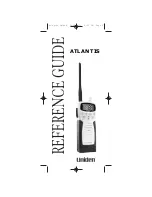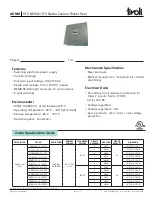
CC2420
SWRS041B Page 55 of 89
A
Unit
dBm
RF Att
30 dB
1AVG
1SA
Ref Lvl
3 dBm
Ref Lvl
3 dBm
Center 2.45 GHz
Span 2 MHz
200 kHz/
RBW
10 kHz
VBW
10 kHz
SWT
50 ms
-90
-80
-70
-60
-50
-40
-30
-20
-10
0
-97
3
Date: 23.OCT.2003 21:38:33
Figure 31. Single carrier output
33.2 Modulated
spectrum
The
CC2420
has a built-in test pattern
generator that can generate pseudo
random sequence using the CRC
generator. This is enabled by setting
MDMCTRL1.TX_MODE
to 3 and issues an
STXON
command strobe. The modulated
spectrum is then available on the RF pins.
The low byte of the CRC word is
transmitted and the CRC is updated with
0xFF for each new byte. The length of the
transmitted data sequence is 65535 bits.
The transmitted data-sequence is then:
[Synchronisation header] [0x00, 0x78,
0xb8, 0x4b, 0x99, 0xc3, 0xe9, …]
Since a synchronisation header (preamble
and SFD) is transmitted in all TX modes,
this test mode may also be used to
transmit a known pseudorandom bit
sequence for bit error testing. Please note
that
CC2420
requires symbol
synchronisation, not only bit
synchronisation, for correct reception.
Packet error rate is therefore a better
measurement for the true RF
performance.
Another option to generate a modulated
spectrum is to fill the TXFIFO with pseudo-
random data and set
MDMCTRL1.TX_MODE
to 2.
CC2420
will
then transmit data from the FIFO
disregarding a TXFIFO underflow. The
length of the transmitted data sequence is
then 1024 bits (128 bytes).
A plot of the modulated spectrum from
CC2420
is shown in Figure 32. Note that to
find the output power from the modulated
spectrum, the RBW must be set to 3 MHz
or higher.
















































